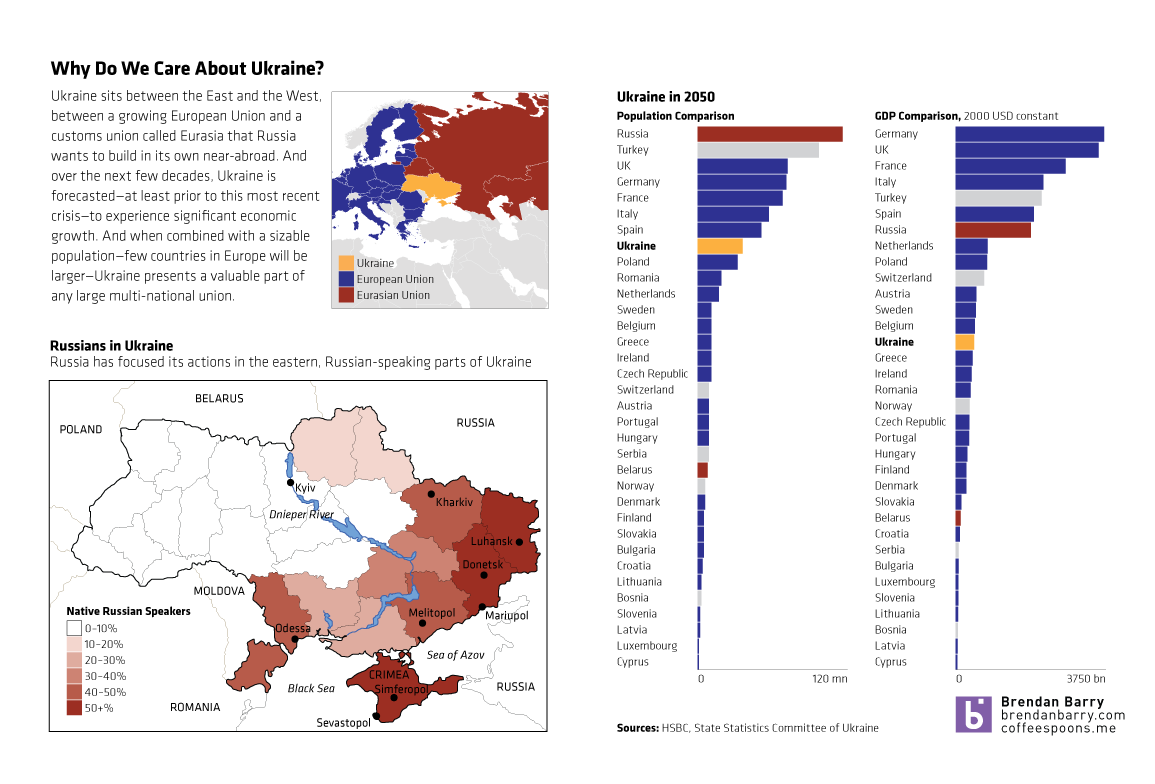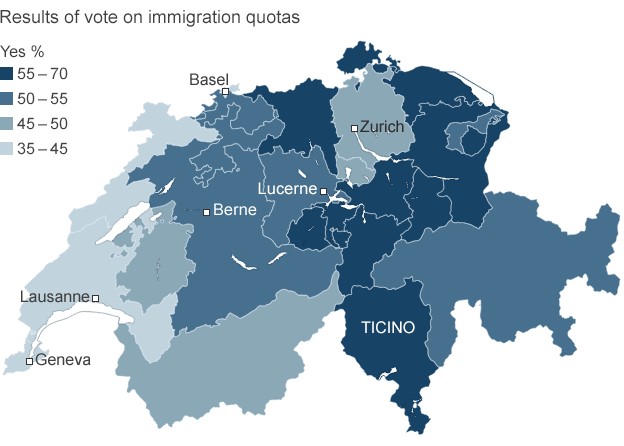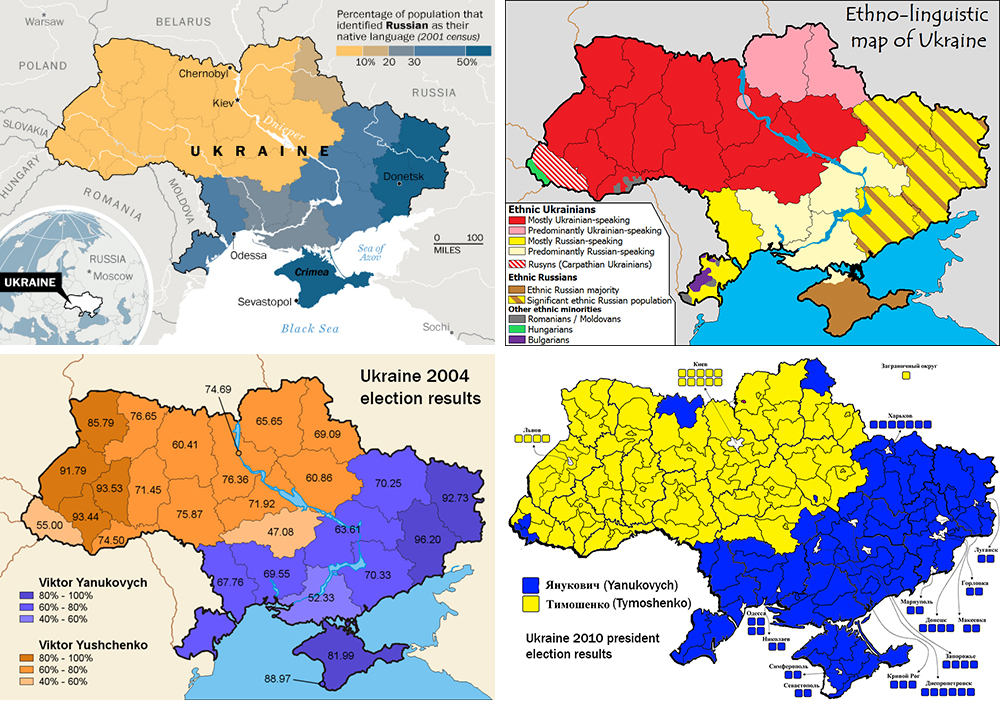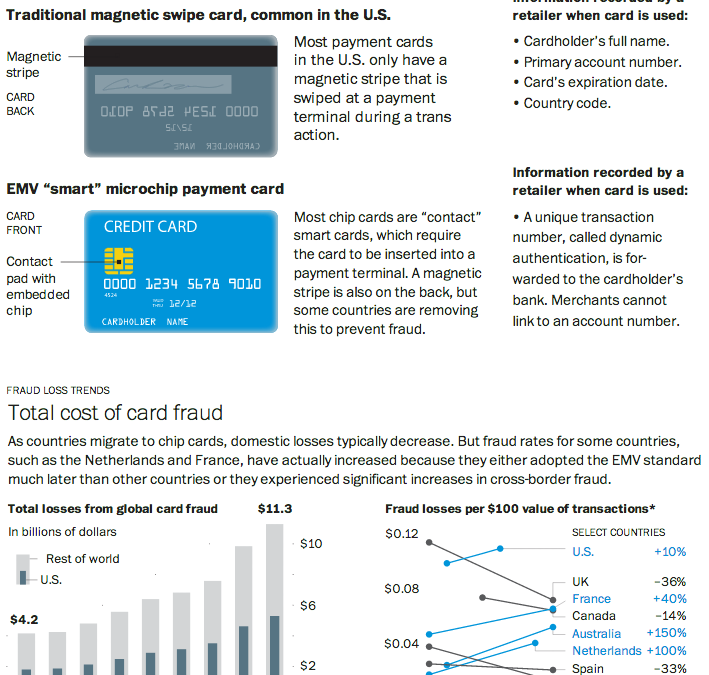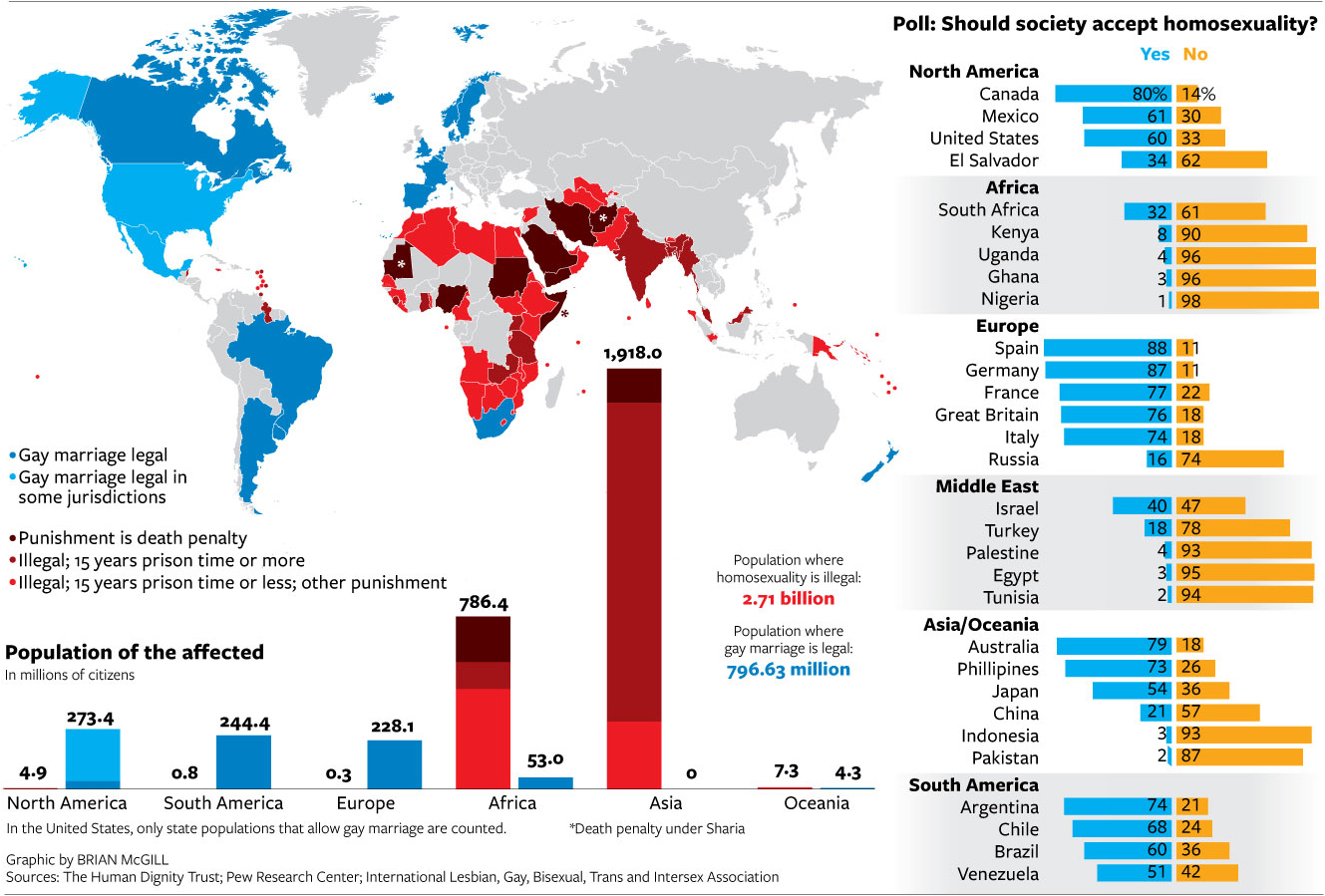The West hesitates to use military force to push Russian troops out of Crimea. Likely with good reason as any such campaign would be neither cheap nor bloodless in addition to running the risk of spreading beyond the borders of Ukraine. So that leaves diplomatic and economic isolation. Diplomatic isolation is already underway—the G8 conference to be hosted in Sochi this summer is all but dead. But economic isolation is still being discussed.
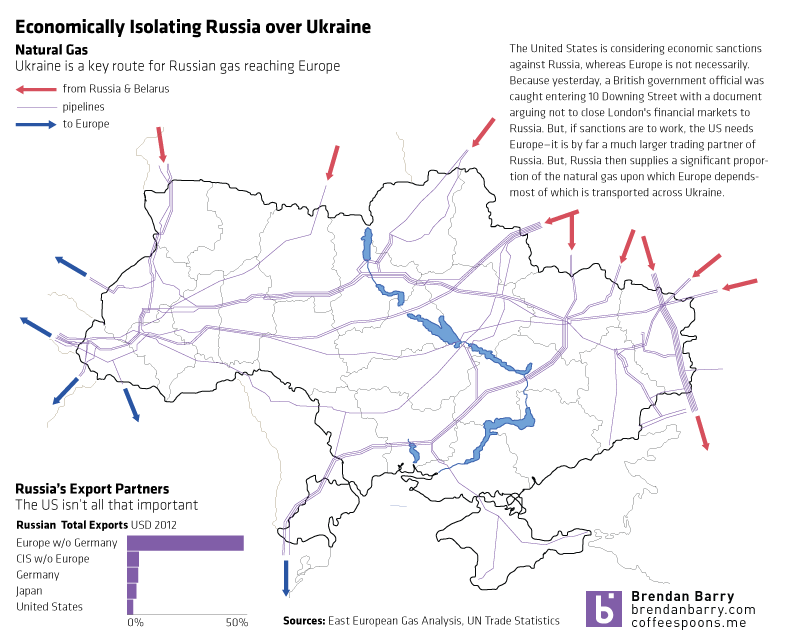
The United States is generally in favour, but Europe—namely Germany—has been more cautious. But as my graphic shows, without Europe a sanctions regime would be largely toothless since half of Russia’s exports go to Europe. Except that Russia is also responsible for a significant proportion of Europe’s imported natural gas and sanctions on Russia could cause an interruption in that fuel to Western Europe. Naturally, most of that natural gas is, of course, transported through pipelines running across Ukraine.

